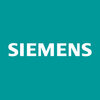Filter interviews by
Clear (1)
BHEL PLC Engineer Interview Questions and Answers
BHEL PLC Engineer Interview Experiences
1 interview found
I was interviewed in Dec 2024.
(2 Questions)
- Q1. If I don't understand anything then should I teach him?
- Q2. If I make any mistake, will I be fired?
Interview Preparation Tips
Top trending discussions






Interview questions from similar companies

Senior Engineer Interview Questions & Answers
Larsen & Toubro Limitedposted on 10 Sep 2017
I was interviewed before Sep 2016.
Interview Questionnaire
1 Question
- Q1. Ocampo, basic electronics and C
Interview Preparation Tips
Duration: 1 hour
Total Questions: 50
Skills: Embedded Systems, C Programming
College Name: Sahyadri college of engineering

Senior Engineer Interview Questions & Answers
Larsen & Toubro Limitedposted on 10 Sep 2015
I applied via PLACEMENT
Interview Preparation Tips
Experience: Good detailed interview in terms of technical knowledge
Tips: Should be thorough with the projects you have done during the course
General Tips: be confident of what you put in your resume
Technical knowledge regarding projects undertaken during engineering should be sound
Be confident
Skills: Communication, Thinking capability, knowledge applying capability
College Name: V.E.S Institute Of Technology
Motivation: Opportunity to work in a renowned and core technical company
Funny Moments: We consider the interview panelists to be as tough as our viva externals. Interviewers are mostly on your side(contrary to viva professors :P)

Senior Engineer Interview Questions & Answers
Larsen & Toubro Limitedposted on 12 May 2018
Interview Questionnaire
5 Questions
- Q1. Pertaining to the mentioned roles and responsibilities in your resume
- Q2. Planning and work order creation
- Q3. Piling activities
- Q4. Introduction
- Q5. Cross checking of documents
Interview Preparation Tips
Experience: On the criteria that I scored atleast 60% overall and had no gap between job/s.

Senior Engineer Interview Questions & Answers
Kirloskar Electric Companyposted on 3 Apr 2021
I applied via Referral and was interviewed in Oct 2020. There were 5 interview rounds.
Interview Questionnaire
4 Questions
- Q1. Questions related to your current job.
- Q2. They check your confidence level and your communication level.
- Q3. Should know to handle pressure.
- Q4. They test your technical knowledge in the field you have previously worked at.
Interview Preparation Tips

Senior Engineer Interview Questions & Answers
Larsen & Toubro Limitedposted on 14 Jul 2021
Interview Questionnaire
1 Question
- Q1. What is your role in previous company

Senior Engineer Interview Questions & Answers
Larsen & Toubro Limitedposted on 11 Jun 2022
I applied via Campus Placement and was interviewed before Jun 2021. There were 3 interview rounds.
Mathematics, English, Reasoning
(2 Questions)
- Q1. They asked Technical questions
- Q2. What is antenna What is satcom
- Ans.
An antenna is a device that converts electrical signals into electromagnetic waves and vice versa. Satcom is short for satellite communication.
Antennas are used for transmitting and receiving signals in various applications such as radio, television, and wireless communication.
Satcom refers to the use of satellites for communication purposes, including television broadcasting, internet access, and military communicatio...
Clean India
Corruption
Interview Preparation Tips

I applied via Referral and was interviewed before Apr 2021. There was 1 interview round.
(1 Question)
- Q1. Maintenance phylosophy
- Ans. Depends on equipment running hour, criticality, availability and standby.
Interview Preparation Tips
- Boe
- Energy manager

I applied via Recruitment Consulltant and was interviewed before May 2021. There was 1 interview round.
(1 Question)
- Q1. Position Tolerance, Tolerance stack, Temperature Rise test, Vaccuum Circuit breaker, arc quenching,
Interview Preparation Tips
Position goes on hold sometimes
They are more happy taking diversity candidates

Senior Engineer Interview Questions & Answers
CG Power and Industrial Solutionsposted on 24 Apr 2021
I applied via Naukri.com and was interviewed before Apr 2020. There were 3 interview rounds.
Interview Questionnaire
2 Questions
- Q1. About circuit breaker, transformer.
- Q2. Single line diagrams, layout, substation calculation.
Interview Preparation Tips
BHEL Interview FAQs
Recently Viewed
Tell us how to improve this page.
BHEL Interviews By Designations
- BHEL Senior Engineer Interview Questions
- BHEL Electrical Engineer Interview Questions
- BHEL Finance Trainee Interview Questions
- BHEL Industrial Trainee Interview Questions
- BHEL HR Executive Interview Questions
- BHEL Manager Interview Questions
- BHEL Design Engineer Interview Questions
- BHEL Mechanical Engineer Interview Questions
- Show more
Interview Questions for Popular Designations
- Process Engineer Interview Questions
- Lead Engineer Interview Questions
- Senior Instrument Engineer Interview Questions
- Quality Engineer Interview Questions
- Graduate Engineer Trainee (Get) Interview Questions
- Production Engineer Interview Questions
- Electrical Engineer Interview Questions
- Junior Engineer Interview Questions
- Show more
BHEL PLC Engineer Interview Process
based on 1 interview
Interview experience
Interview Questions from Similar Companies
Fast track your campus placements
|
Deputy Manager
326
salaries
| ₹0 L/yr - ₹0 L/yr |
|
Manager
272
salaries
| ₹0 L/yr - ₹0 L/yr |
|
Senior Manager
131
salaries
| ₹0 L/yr - ₹0 L/yr |
|
Graduate Apprentice Trainee
125
salaries
| ₹0 L/yr - ₹0 L/yr |
|
Senior Engineer
90
salaries
| ₹0 L/yr - ₹0 L/yr |

Siemens

Thermax Limited

Larsen & Toubro Limited

Tata Power
- Home >
- Interviews >
- BHEL Interview Questions >
- BHEL PLC Engineer Interview Questions


















